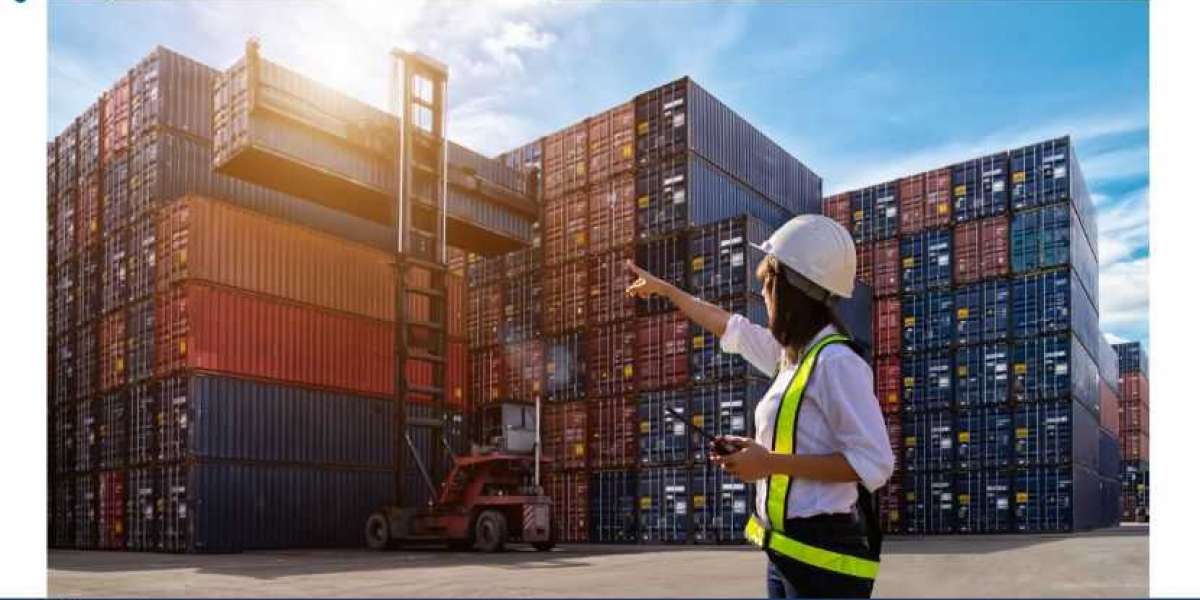The UAE logistics market size has emerged as a cornerstone of the nation’s economy, driven by its strategic geographic location, world-class infrastructure, and booming trade activities. Valued at USD 62.08 billion in 2024, the market is projected to grow at a compound annual growth rate (CAGR) of 5.5% between 2025 and 2034, reaching an impressive USD 100.89 billion by 2034. This growth underscores the UAE's position as a global logistics hub, attracting investments and fostering economic development.
This article explores the market dynamics, key drivers, challenges, emerging trends, and growth opportunities shaping the UAE logistics market.
Key Drivers of Growth in the UAE Logistics Market
1. Strategic Geographic Location
The UAE's location at the crossroads of Europe, Asia, and Africa makes it a critical hub for global trade. With access to major international shipping routes, the country serves as a gateway for goods moving between East and West. Ports like Jebel Ali, one of the world’s busiest, and modern airports such as Dubai International and Al Maktoum International, enhance the UAE’s logistical efficiency.
This strategic advantage has positioned the UAE as a preferred base for multinational companies seeking to establish regional distribution centers, fueling the growth of its logistics market.
2. Booming E-Commerce Sector
The rapid growth of e-commerce in the UAE has significantly increased the demand for logistics services. Online shopping platforms are driving the need for efficient last-mile delivery solutions, warehousing, and inventory management. Consumers’ preference for same-day and next-day deliveries has pushed logistics providers to optimize operations and adopt advanced technologies to meet evolving demands.
3. Infrastructure Development
The UAE continues to invest heavily in infrastructure development to support its logistics sector. Projects such as the Etihad Rail, designed to connect key cities and ports within the UAE and across the GCC, are expected to enhance connectivity and reduce transportation costs. Expansion of free zones like Dubai South and Abu Dhabi’s Khalifa Industrial Zone further bolster the country’s logistics capabilities.
4. Trade Diversification and Economic Initiatives
Under its Vision 2030 initiatives, the UAE is diversifying its economy to reduce reliance on oil revenues. The logistics sector plays a central role in these efforts, with the government prioritizing trade, manufacturing, and re-exports as key growth areas. Initiatives like the Dubai Silk Road strategy aim to strengthen the UAE’s position as a global trade and logistics hub.
Emerging Trends in the UAE Logistics Market
1. Digital Transformation
Digital technologies are revolutionizing logistics in the UAE. Automation, artificial intelligence (AI), blockchain, and the Internet of Things (IoT) are enhancing supply chain visibility, operational efficiency, and cost-effectiveness. Smart warehousing systems, autonomous vehicles, and drone deliveries are increasingly being adopted to meet the growing demands of e-commerce and global trade.
2. Sustainability and Green Logistics
Sustainability is becoming a priority in the logistics sector as the UAE works to align with global environmental standards. Companies are adopting green logistics practices, including electric vehicles, energy-efficient warehouses, and carbon-neutral shipping solutions. The UAE government’s focus on renewable energy and eco-friendly policies further supports this trend.
3. Growth of Cold Chain Logistics
The demand for cold chain logistics is on the rise due to the growing need for temperature-controlled storage and transportation. The pharmaceutical and food industries, in particular, are driving this demand, with the UAE serving as a hub for the import and export of perishable goods. Advanced cold storage facilities and specialized logistics providers are expected to play a critical role in this segment.
4. Expansion of Free Zones
The UAE’s free zones, which offer tax benefits, streamlined regulations, and state-of-the-art infrastructure, are attracting international logistics and manufacturing companies. These zones serve as key enablers for trade and re-export activities, further strengthening the logistics sector.
Challenges in the UAE Logistics Market
1. High Operational Costs
The UAE's logistics market faces challenges related to high operational costs, including labor, fuel, and real estate expenses. Companies must balance these costs while maintaining competitive pricing to attract clients in a highly competitive market.
2. Regulatory and Cross-Border Challenges
Complex regulations and customs procedures can create bottlenecks in cross-border trade. Logistics providers must navigate varying regulatory requirements and ensure compliance to avoid delays and additional costs.
3. Labor Shortages and Skill Gaps
As the logistics sector grows, the demand for skilled workers is increasing. However, labor shortages and skill gaps, particularly in areas like technology and supply chain management, remain a challenge. Companies must invest in training and workforce development to address this issue.
Market Segmentation
By Mode of Transportation:
- Road Transportation: Dominates domestic logistics due to its flexibility and cost-effectiveness.
- Air Freight: Preferred for high-value and time-sensitive goods, supported by the UAE’s world-class airports.
- Sea Freight: Plays a vital role in international trade, leveraging the UAE’s advanced port infrastructure.
- Rail Transportation: Set to grow with the completion of the Etihad Rail network, enhancing connectivity across the GCC.
By End-User Industry:
- E-Commerce: A major driver, requiring efficient warehousing and last-mile delivery solutions.
- Pharmaceuticals and Healthcare: Driving demand for cold chain logistics and secure transportation.
- Food and Beverage: Increasing the need for temperature-controlled logistics.
- Retail and Manufacturing: Boosting demand for efficient supply chain management.
Opportunities in the UAE Logistics Market
1. E-Commerce Expansion
With the UAE’s e-commerce market projected to grow rapidly, logistics providers can capitalize on the rising demand for advanced delivery solutions, including same-day delivery and contactless payments.
2. Investment in Smart Technologies
Companies investing in smart technologies and automation will gain a competitive edge. Solutions such as AI-driven route optimization, blockchain for secure transactions, and IoT-enabled tracking are transforming logistics operations.
3. Cold Chain Innovations
The growing pharmaceutical and food industries present opportunities for cold chain logistics providers to expand their capabilities. Advanced temperature-monitoring technologies and energy-efficient solutions can further drive growth in this segment.
4. Regional Trade Partnerships
The UAE’s strategic partnerships with neighboring GCC countries and global trade agreements provide opportunities for logistics providers to expand regionally and internationally.




